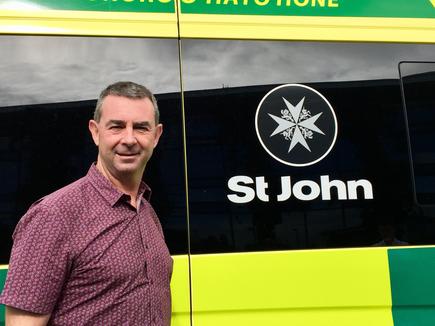Key lessons from the digital transformation of emergency services data
- 07 May, 2018 06:30

For Chris Laufale, a good way to gauge the usability of a system is through the “2 am test”.
“It is 2 o’clock in the morning,” he explains, “you are tired, very tired, and you want to make sure you can do the job right, as efficiently as possible.”
“If I can’t do it at 2 am, and I’m the expert, then no one is going to do it,” says Laufale, a paramedic and tablet technology subject matter expert at St John New Zealand.
Laufale explains this is the general approach St John took when it started rolling out the electronic Patient Report Form (ePRF) three years ago.
The programme allows ambulance officers to move away from paper-based patient forms and use mobile devices, such as tablets, to access critical patient information.
Ambulance officers can use it to forward patient information electronically to an emergency department, specialist or GP while on the road.
The information flows immediately — starting from the 111 call, then through to ambulance officers, to the emergency departments and medical centres.

Cameron Brill, Chief Information Officer at St John, explains there are two ambulance services in New Zealand - St John and Wellington Free Ambulance.
In March, St John rolled out ePRF to its counterpart in Wellington.
“We now have a live nationwide electronic platform for patient ambulance,” says Brill. New Zealand is among the first countries in the world to achieve this.
In April, ePRF has already been used for over a million health records by responding ambulances.
Brill says what emerged is a tier one system in terms of front end and deployment.
Brill explains the technology will provide the foundation for electronic sharing of patient information between St John and hospitals, GPs and medical centres.
“We are putting the patient at the centre and providing care across the sector,” says Brill.

We are putting the patient at the centre and providing care across the sector
Gone digital
Paul Wykes, PMO manager, St John New Zealand, says before ePRF, the ambulance officers filled in forms with three carbon copies. The ambulance officer would remove the original copy and give it to the hospital.
This format, however, poses a range of challenges —the handwritten reports may not be legible or are incomplete. The patient NHI number may not be consistently collected, and the hospitals are not always aware of incoming ambulance patients.
With ePRF, the ambulance officer will hand over an ambulance care summary advice sheet which contains a secure unique access code or handover PIN, for the incident.
The electronic information can then be printed at the emergency departments by the clinicians.

Brill says St John is currently working with the district health boards to allow the hospitals to receive the ambulance data directly to their clinical workstation systems.
Brill says ePRF improves processes around patient care, but the other benefit is data.
“The clinicians are able to see what is coming to the hospital in real-time,” he says.
He says St John is now starting to put ePRF data into the analytics platform, and into its new Azure data lake. Long-term, the data can also be used to assess trends in healthcare.
Brill believes the opportunities are endless for data usage for the clinical side of things, especially when the tools can start gathering the data and provide performance reports for the clinicians and the government health agencies.


Critical training
Laufale says St John organised classroom training for staff on the new system.
The insights from these classes were integrated into the online training modules for the Wellington Free Ambulance. He estimates more than 5000 people have been trained on the ePRF through the classrooms and online modules.
He says it is very important to understand the customers who will use the system, both the frontline staff and the clinicians.
Laufale says they also gave users the ability to send feedback on the system in real time.

Wykes, on the other hand, explains part of the induction process of ICT staff is to sit in the call centre and listen to the dispatchers, and see how they work. “They will then have end to end understanding of what they are supporting,” he says.
Wykes says they initially received 6000 pieces of feedback from the users of the ePRF and of these, 109 were unique and of these the top 33 were implemented in the first major release of the application.
He believes this approach helps break down the barriers between ICT and those in the field.
Wykes explains when they explain to the users that they may have to go offline for updates, they get a collective response from the latter that they never want to go back to paper.
For Laufale, what matters is that when the ambulance team provides the information to the hospital, the clinicians “are going to see the whole picture of the patient”.


